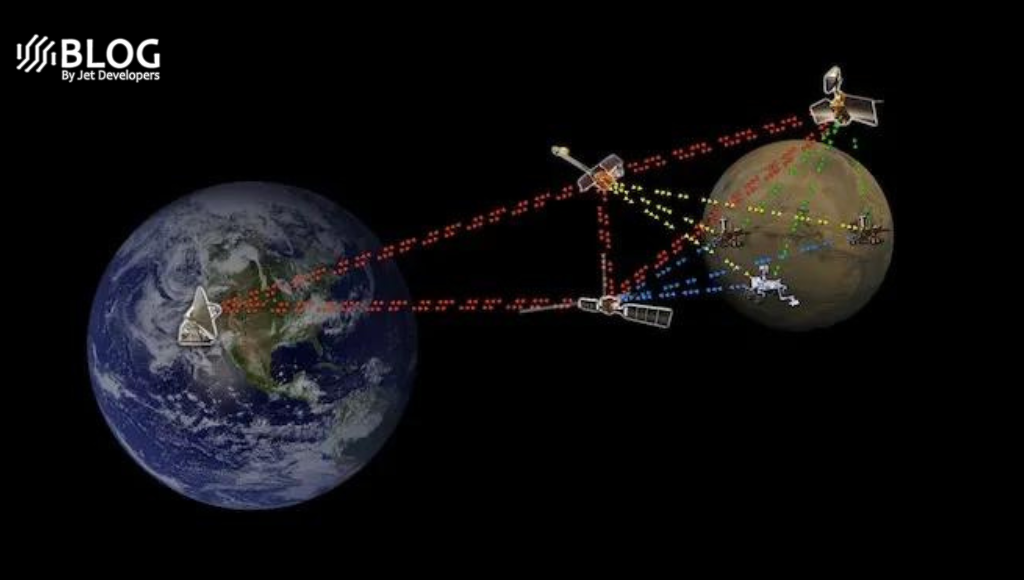As humanity’s aspirations turn towards Mars, one pressing question arises: will future Mars explorers have interplanetary internet? Is it possible for the internet to one day reach across space, connecting humans on Earth and Mars? These intriguing queries find some answers in a recent paper, published on the preprint server arXiv, which proposes a novel method for establishing an internet communications network for the Red Planet. The key ingredient in beaming data to Mars lies in the realm of edge computing.
Presently, NASA relies on the Deep Space Network (DSN) to communicate with Martian satellites and rovers. However, this process often takes hours for image and video transfer. On the other hand, astronauts aboard the International Space Station have web access, albeit at a speed comparable to dial-up internet.
The paper, titled ‘Can Orbital Servers Provide Mars-Wide Edge Computing?’, introduces the concept of utilizing edge computing—leveraging distributed servers—to enable rapid streaming and other applications for data transfer to Mars. The researchers propose constructing a system akin to SpaceX’s Starlink constellation, albeit on a smaller scale.
To implement edge computing on Mars, significant infrastructure would be required. The scientists suggest deploying a constellation of satellites around the Red Planet, precisely nine satellites distributed across nine distinct orbital planes, resulting in a total of 81 satellites. These satellites would establish communication links, enabling redundant backups of data. With this approach, multiple landing sites on Mars could simultaneously connect with several satellites. For crewed missions to Mars, ground servers would facilitate faster data retrieval.
Undoubtedly, such an endeavor would entail substantial costs. Hence, the researchers advocate for a gradual build-up of the satellite network over time. Initial missions aimed at laying the groundwork for crewed Mars missions could involve launching a few satellites to initiate the process.
Interestingly, this proposal shares similarities with Aquarian Space, a startup exploring the concept of Solnet. Aquarian’s vision entails creating a high-speed delivery satellite network, capable of speeds up to 100 megabits per second. With $650,000 in seed funding received last year, Aquarian aims to develop a broadband internet network that could connect Earth, the Moon, and potentially even Mars.
The quest to establish an interplanetary internet paves the way for unprecedented connectivity between Earth and Mars. While challenges remain, the prospect of bridging the internet divide across vast cosmic distances holds tremendous potential for future explorations and collaborations between the two worlds.






